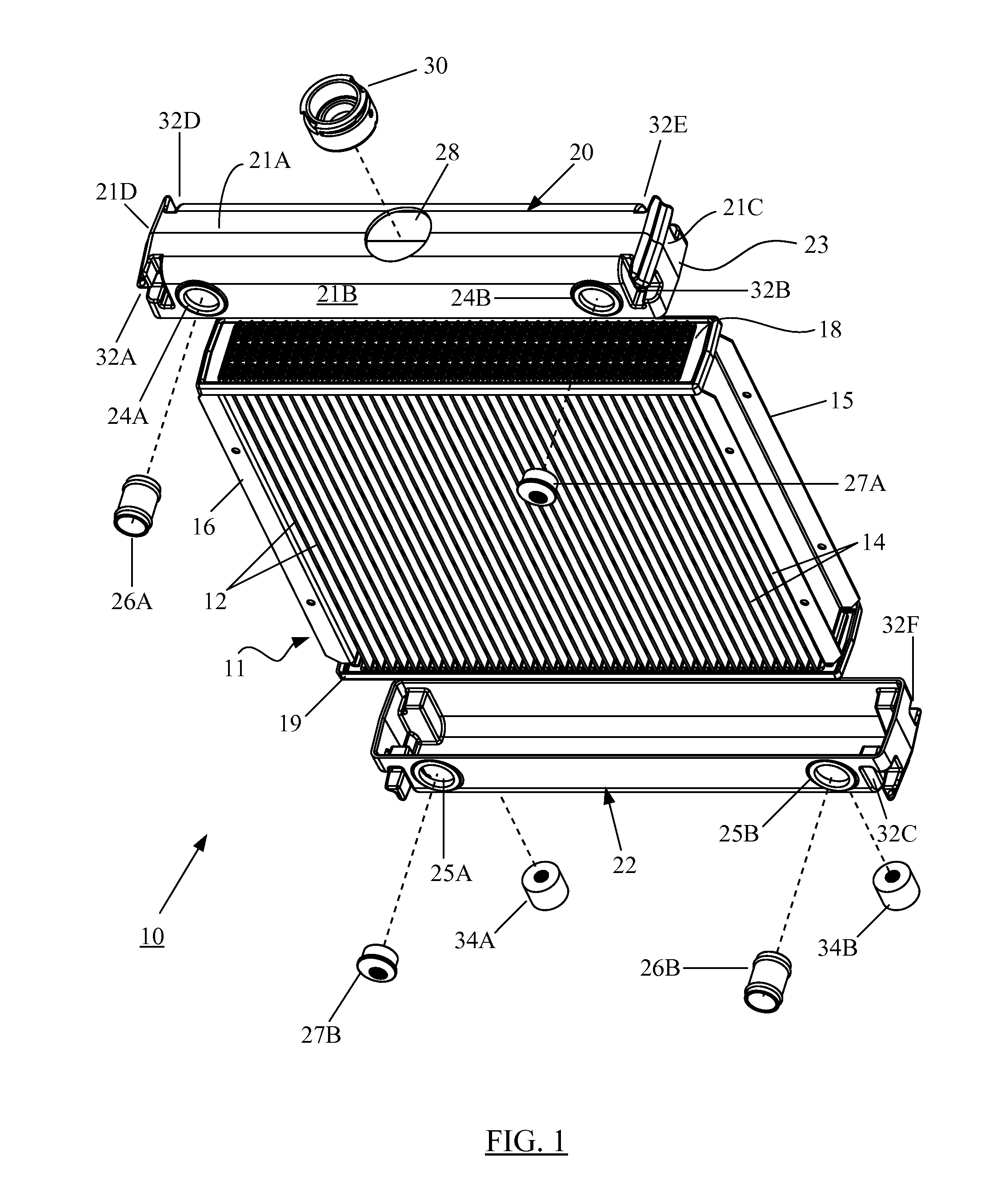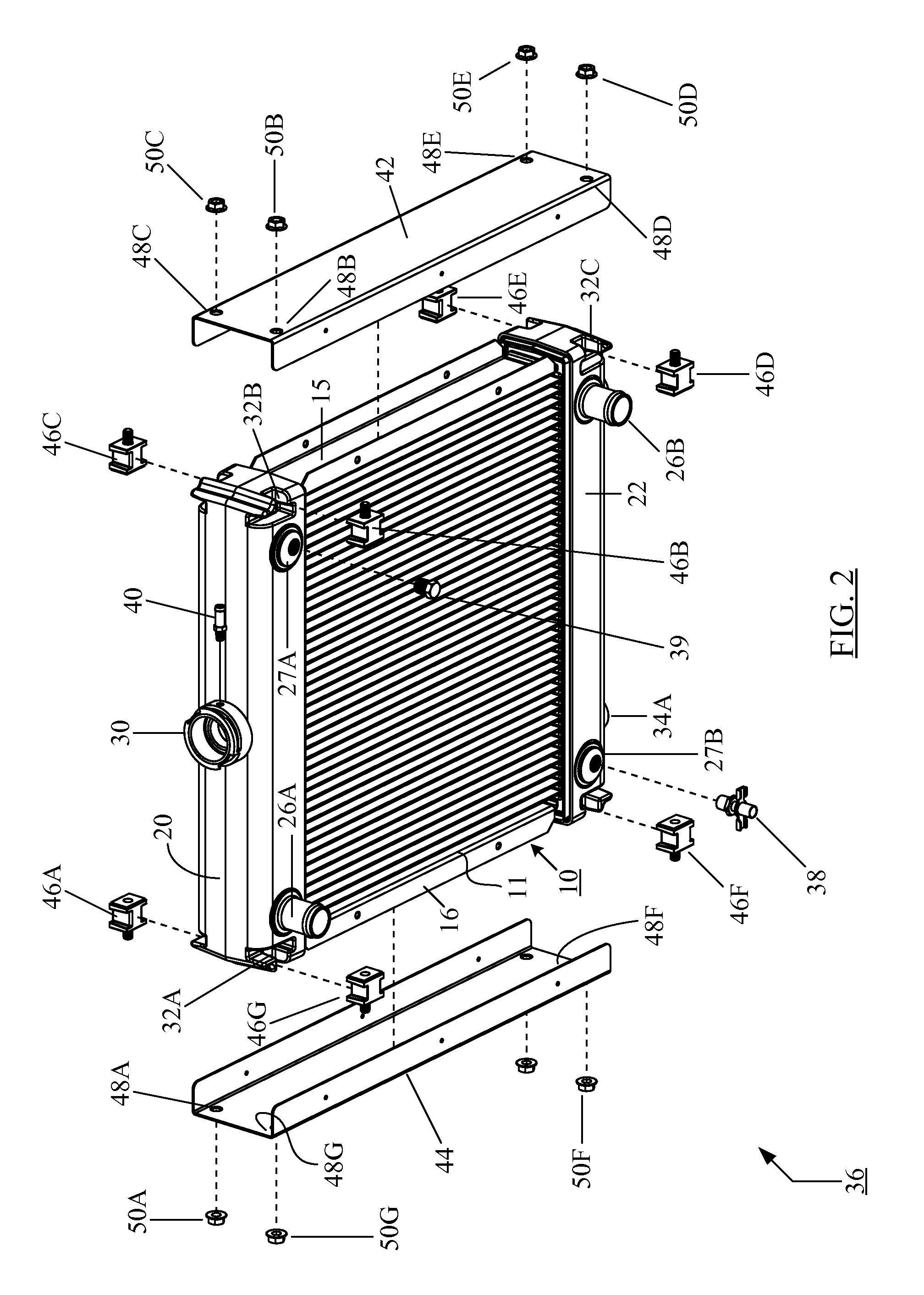Heat exchanger header and related methods and apparatuses
a heat exchanger and header technology, applied in the field of heat exchangers, can solve the problems of plastic tanks, aluminum side brackets that lack the strength and cost advantages of steel side brackets, and tend to be less durable, so as to facilitate the connection of tanks and facilitate the insertion of radiator tanks
- Summary
- Abstract
- Description
- Claims
- Application Information
AI Technical Summary
Benefits of technology
Problems solved by technology
Method used
Image
Examples
Embodiment Construction
[0044]The accompanying figures and the description that follows set forth the present disclosure in embodiments of the present disclosure. However, it is contemplated that persons generally familiar with mechanical designs, and more particularly with designs of industrial heat exchangers, will be able to apply the teachings of the present disclosure in other contexts (e.g., for automotive radiators) by modification of certain details. Accordingly, the figures and description are not to be taken as restrictive of the scope of the present disclosure, but are to be understood as broad and general teachings. In the discussion herein, when any numerical value is referenced, such value is understood to be a practically-feasible design approximation taking into account variances that may be introduced by such mechanical operations as machining, tooling, drilling, casting, etc.
[0045]It is observed at the outset that the directional terms such as “top,”“bottom,”“right,”“left,”“horizontal,”“v...
PUM
| Property | Measurement | Unit |
|---|---|---|
| height | aaaaa | aaaaa |
| height | aaaaa | aaaaa |
| length | aaaaa | aaaaa |
Abstract
Description
Claims
Application Information
 Login to View More
Login to View More - R&D
- Intellectual Property
- Life Sciences
- Materials
- Tech Scout
- Unparalleled Data Quality
- Higher Quality Content
- 60% Fewer Hallucinations
Browse by: Latest US Patents, China's latest patents, Technical Efficacy Thesaurus, Application Domain, Technology Topic, Popular Technical Reports.
© 2025 PatSnap. All rights reserved.Legal|Privacy policy|Modern Slavery Act Transparency Statement|Sitemap|About US| Contact US: help@patsnap.com



